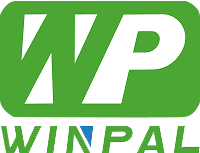OSHA requires companies to transition to the Global Harmonized System (GHS) standard for chemical safety and hazard notification in 2016. Although most employers now know about and work within the new standard, it is still difficult to find the exact information label needed to create a standard-compliant GHS.
For ordinary factories, if the main container label is damaged or illegible, it is necessary to create a new label that meets the GHS requirements, which usually makes the safety and compliance team feel painful. However, if chemicals will be distributed, transported or even transferred between facilities, compliance with GHS is essential.
This article briefly outlines the Safety Data Sheet (SDS), how to find the required GHS label information, how to use the SDS to quickly check GHS compliance, and design an effective and compliant GHS label.
The Safety Data Sheet is a summary document covered in OSHA Standard 1910.1200(g). They include a wealth of information about the physical, health, and environmental hazards of each chemical substance and how to store, handle, and transport it safely.
The information contained in the SDS is divided into 16 sections to facilitate navigation. These 16 parts are further organized as follows:
Sections 1-8: General information. For example, determine the chemical, its composition, how it should be handled and stored, exposure limits, and measures to be taken in various emergency situations.
Sections 9-11: Technical and scientific information. The information required in these specific sections of the safety data sheet is very specific and detailed, including physical and chemical properties, stability, reactivity and toxicological information.
Sections 12-15: Information not managed by OSHA agencies. This includes environmental information, disposal precautions, transportation information, and other regulations not mentioned on the SDS.
Keep a copy of the new report provided by the independent analysis company Verdantix for detailed fact-based comparisons to compare the 22 most famous EHS software vendors in the industry.
Learn useful tips and tricks to navigate your transition to ISO 45001 certification and ensure an effective health and safety management system.
Understand the 3 basic areas, focusing on achieving an excellent safety culture, and what can be done to promote employee participation in the EHS program.
Get answers to the five most frequently asked questions about: how to effectively reduce chemical risks, get the most value from chemical data, and get support from chemical management technical plans.
The COVID-19 pandemic provides a unique opportunity for health and safety professionals to rethink how they manage risk and build a stronger safety culture. Read this eBook to learn about the actionable steps you can implement today to improve your program.
Post time: Feb-26-2021
